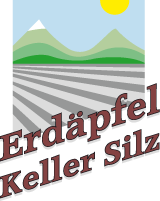Geschichte
Von Südamerika ins Tiroler Oberland
In Tirol there is really only one association with "Peru": the partnership between the municipalities of Silz and Haiming with the "jungle community" Pozuzo. More or less forgotten, however is that a special brand of these Oberinntal municipalities has its home in Peru: the potato. The potato grew and grew in Peru and Chile ever since "wild". It was cultivated in the western coastal countries of South America long before the arrival of the conquerors. Zarate Acosta, a Spanish writer who traveled to Peru in 1514, described the potato as one of the usual foods. The Spaniards brought the potatoes to their homeland, and from there they migrated to Italy, where, by the end of the sixteenth century, they were called taratuffi (earth truffle, hence the name "potato" ) Was quite well known. John Hawkins imported it to Ireland in 1586. Charles de l'Escluse (Clusius), professor of the Academy of Leyden, described it in 1588 as a rare plant, remarking that in Italy the potato was already so widespread as to feed pigs with these fruits. To London, she was brought directly from Virginia by Admiral Drake, who had first introduced her to the English colonies of North America, but she was not noticed by the British. It was not until 1628, when it was brought to England a second time, this time by Sir Walter Raleigh, that its cultivation spread over the British Isles. According to Humboldt the triumph of the tubers began in Saxony from 1717, from 1728 to Scotland, and from 1738 to Prussia; After the great famine of 1771, its cultivation was intensified in all regions of Germany.
From South Germany from the first impulse for the potato cultivation in Tyrol may have come. For example, the potato cultivation in the Lech Valley is documented for the year 1788, but not yet in the Inn valley. Even in 1802 its cultivation was not practiced in all parts of the country. In South Tyrol the potato cultivation was still insignificant at that time, but in the Lechtal the potato cultivation area already exceeded the cultivation areas of the individual cereals. In the first quarter of the 19th century the potatoes gained in importance in the Oberinntal. The accelerated development was triggered by the catastrophe year 1816. Johann Jakob Staffler introduced his country description in 1839, The potato cultivation area has increased by more than half in the last 30 years; In some parts of Tyrol, especially in the Oberinntal valley, it had become "the true bread-making and everywhere the safest means of protection against a famine."
Fein- oder Fockenkost?
Es dauerte auch in Tirol eine geraume Zeit, bis die Kartoffel in ihrem hohen Werte für die Ernährung der Menschen erkannt und dementsprechend geschätzt wurde. Der Erdapfel galt nämlich lange als untergeordnete Fruchtgattung, die auf manchem Bauerngut überhaupt nicht angebaut wurde. Sooft man etwas Minderwertiges bezeichnen wollte, musste der verachtete Erdäpfel herhalten, den man mit allerlei Spottnamen, z. B. "Natschenfutter" oder "Arrestantenzöbl", belegte. Kurzum: Niemand wollte ein Erdäpfelpatscher sein! In den Anfangsjahren des Kartoffelanbaues in Tirol wanderte der größte Teil der Ernte in die Futtertröge, meist für die Schweine. In der Küche wussten viele Bäuerinnen mit den Erdäpfeln nichts rechtes anzufangen; man brachte sie halb gesotten auf den Tisch und löffelt dazu Milch. Als man anfing, sie auch in anderen Speisen, z.B. in Mehlspeisen, zu verwenden, erregte das bei den Dienstboten und Nachbarn Anstoß und böse Reden.
Dazu Anekdoten aus dem Unterland, wo die Abneigung gegen die neue Frucht größer gewesen sein soll als im als konservativ bekannten Oberinntal:
"D´ Easchdäpfi", sagte einmal ein Knecht, als zum ersten Male Erdäpfelnudeln aufgetragen wurden, " d´Easchdäpfi wern a oiwei gschaftiga". "Wia so?" - "Wie s´ überoi dabei sein müass´n."
Als in Stans (bei Schwaz) der als Volksdichter bekannte Stögerbauer Hans Obrist (1759 - 1834) den Anbau der Kartoffel einführte, wollten ihm die Dienstboten nicht mehr bleiben und es sprach sich herum, beim Stöger gebe es eine "Fackenkost".
War ein schweres, hageldrohendes Gewitter im Anzug, so konnte man sagen hören: "War hoit recht, wenn´s von unt auffa ei´schlaget!", d. h. um die Erdäpfel wäre nicht schade.
Aber dieses Unwetter "von unt auffa" ist dann in Schwoich wirklich gekommen, und zwar in Gestalt einer furchtbaren Engerlingplage, die, wie dort die Ältesten des Dorfes zu berichten wussten, einige Jahre nacheinender hauste und fast die ganze Kartoffelernte vernichtete.
Das Misstrauen gegen die neue Pflanze war aber auch in anderen Regionen Europas breit und ließ allenthalben bizarre Auswüchse keimen. Zwei Beispiele:
In Frankreich wurde noch im 18. Jahrhundert der Anbau in einigen Regionen verboten, Das Parlament (Oberster Gerichtshof) von Besancon fällte folgendes Urteil: "In Anbetracht, dass die so genannten Erdäpfel eine schädlich Frucht sind und ihr Genuss den Aussatz hervorrufen kann, verbieten wir hiermit ihren Anbau in unserem Lande bei schwerer Strafe."
In Russland waren die "Altgläubigen" der Kartoffel nicht wohl gesonnen. Sie meinten, die Kartoffel sei "die verbotene Frucht, welche die beiden ersten Menschen aßen. Jeder, der die Kartoffeln esse, sei Gott nicht gehorsam, verstoße gegen die Heilige Schrift und komme niemals in das königliche Himmelsreich". Auch sei die Kartoffel aus dem Körper der Sünderin und aus der Spucke des Teufels entstanden. Deshalb sei es allen Christen verboten, die Kartoffel zu essen. - Davon überzeugt ganz überzeugt zerstörten im die Bauern in Bykovskii Jahre 1842 die Kartoffelfelder und pflanzten Hafer an.









